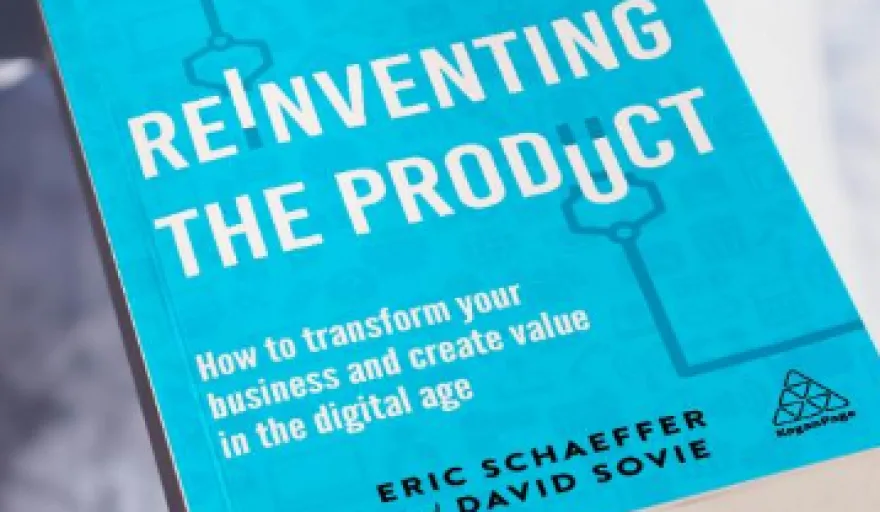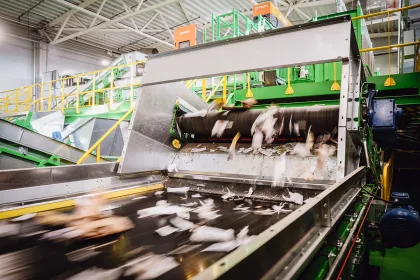Eric Schaeffer and David Sovie, Senior Managing Directors at Accenture, talk to a former Tesla employee about a new generation of smart vehicles.
- INTRODUCTION
- Q&A WITH TRAINED SOFTWARE ENGINEER, FORMER EMPLOYEE AT TESLA
- What is the key feature characterising a Tesla car as a connected product?
- Can you think of any analogies in other product fields?
- What sort of improvements are we talking about?
- So, in a way, the car finds itself in permanent optimisation mode?
- Give us a real-life example of how software can change the user experience.
- How do you establish pricing models for fluid improvements of a car experience?
- Does an engineering style such as Tesla’s that is so vastly driven by data analytics need a special company culture?
- How is that reflected in the organisational set-up?
INTRODUCTION
Digital technology is highly disruptive, but also the biggest opportunity to reposition product-making companies. We gathered insights on the challenges from leading companies when working on our new book Reinventing the Product: How to transform your business and create value in the digital age. Here are some excerpts from our conversation with a trained software engineer who has dealt with smart connected products for most of his career, and who worked for US mobility specialist Tesla.
Q&A WITH TRAINED SOFTWARE ENGINEER, FORMER EMPLOYEE AT TESLA
What is the key feature characterising a Tesla car as a connected product?
I would say it is a car that has been uncompromisingly re-architected on a software basis. Tesla models are driven by software and not hardware architecture, despite the fact that there is a tremendous amount of high-end physical engineering in them. But it is software that controls the coupling of all those hardware components.
Can you think of any analogies in other product fields?
A Tesla model compares to a conventional car like a flip phone to a smartphone. For both, very high-end electromechanical engineering is necessary. Both are demanding to design from a hardware perspective. But in one of them the user experience and the operation of the device is coded rigidly into the hardware – like in a flip phone. Tesla, rather like a smartphone, is by contrast a radically software-defined device that can change its function fluidly and very dramatically after the product has shipped. The beauty is that ongoing improvements of the user experience can be conducted via software updates.
What sort of improvements are we talking about?
This is a broad spectrum. These vehicles are sensor platforms that experience and data-record the road life around them via cameras, ultrasonic sensors and radar. That data can be used to inform the development of driver assistant and autopilot capabilities or to develop driver-training sets. It can be used to compare the car’s behaviour under human and automated control in order to tune the algorithms used in the autopilot functionality. The software-based existence of a Tesla gives you really a wide platform on which you can deploy and test any software that supports the car, from driving features to energy management to entertainment.
So, in a way, the car finds itself in permanent optimisation mode?
This is crucial. Due to its quality as a smart and connected product, you can follow in a meticulous way how the product is being used. You see which features are more relevant to the customer and which are not. You can adjust interfaces along their actual usage patterns. You can prioritise features that are most commonly accessed and deprioritise those that are less used. You simply get tremendous product management insight from that operational data history. The product, being able to report its experience in the world, gives you a boost in developing features to make it behave in a way the operator expects and eventually appreciates the car as a good user experience.
Give us a real-life example of how software can change the user experience.
Take the first version of the high-acceleration mode in Tesla’s Model S, for instance. It brought the car from nought to 60 miles per hour in 3.3 seconds. A simple, remotely conducted software update helped to improve that to 3.1 seconds. It was a very significant improvement of the user experience and only doable with a connected and software-rich car. In more traditional cars, the software would not be embedded deeply enough to influence such physical performance features. The same Tesla car a customer bought, say, in 2013 is today a much, much better car than it was when it was bought – due to permanent software updates.
How do you establish pricing models for fluid improvements of a car experience?
That is an interesting question. To pay an initial lump sum for a product and not much thereafter seems less compatible with a world in which you keep data connections with products in the field in order to keep them up to date and safe. As a manufacturer you have different expenditure for the staff and infrastructure to support the product over its whole lifetime. In that view the income is better stretched across the lifespan of the device as well. That is why making smart connected products drives businesses towards subscription models such as ‘product as a service’. You have to decide how to decompose those services and how the initial cost for the mere hardware can be lowered. Attached to that is the important question of whether a product maker such as Tesla or another intermediary becomes the owner of the capital asset, being responsible for hardware maintenance. That would turn it into an almost Uber-style service provider.
Does an engineering style such as Tesla’s that is so vastly driven by data analytics need a special company culture?
That is definitely the case. What I see unique with Tesla is that it is run with a very high appetite and tolerance for risk combined with an explicit approach to managing it. As a defining part of the corporate culture, this enables it to make substantially more rapid progress in product development and vehicle architecture than many competitors.
How is that reflected in the organisational set-up?
There is the universal recognition that all three engineering components that deliver the final product are equally important and need maximum dedication. There is the physical product itself, the combination of hardware and software that provides the operation of the vehicle. Then there is the development of the user interfaces, integrating the vehicle’s capabilities to a unique experience for the user. And then there is thirdly the back-end service infrastructure that monitors, manages and enhances the fleet of products in the field, enables improvements via software updates and operates the data collection. Tesla recognises that all three things need to be executed extremely well; most companies don’t yet have that done.




























